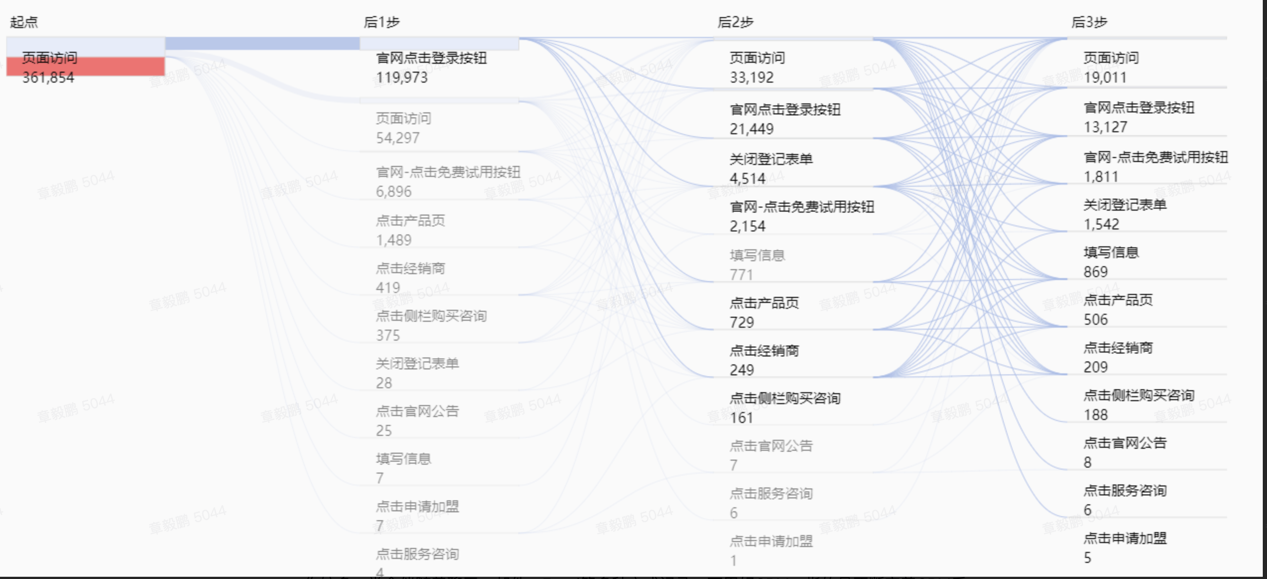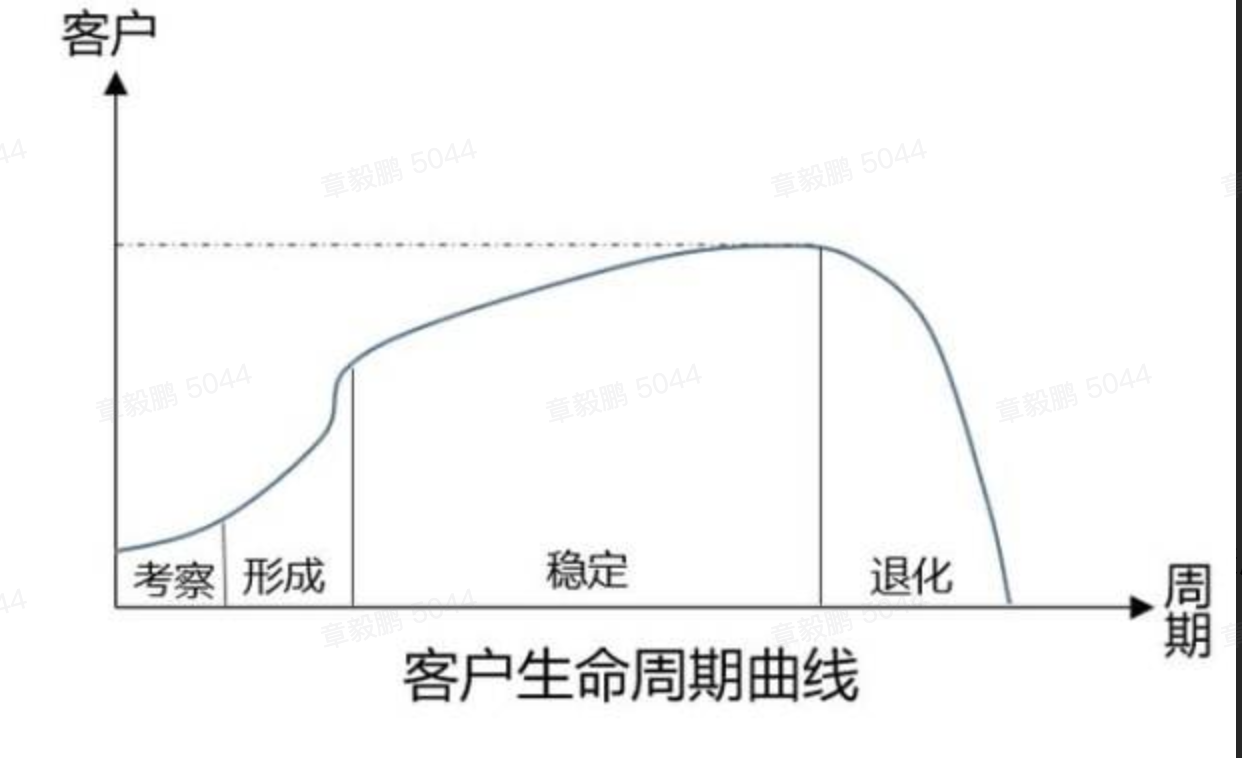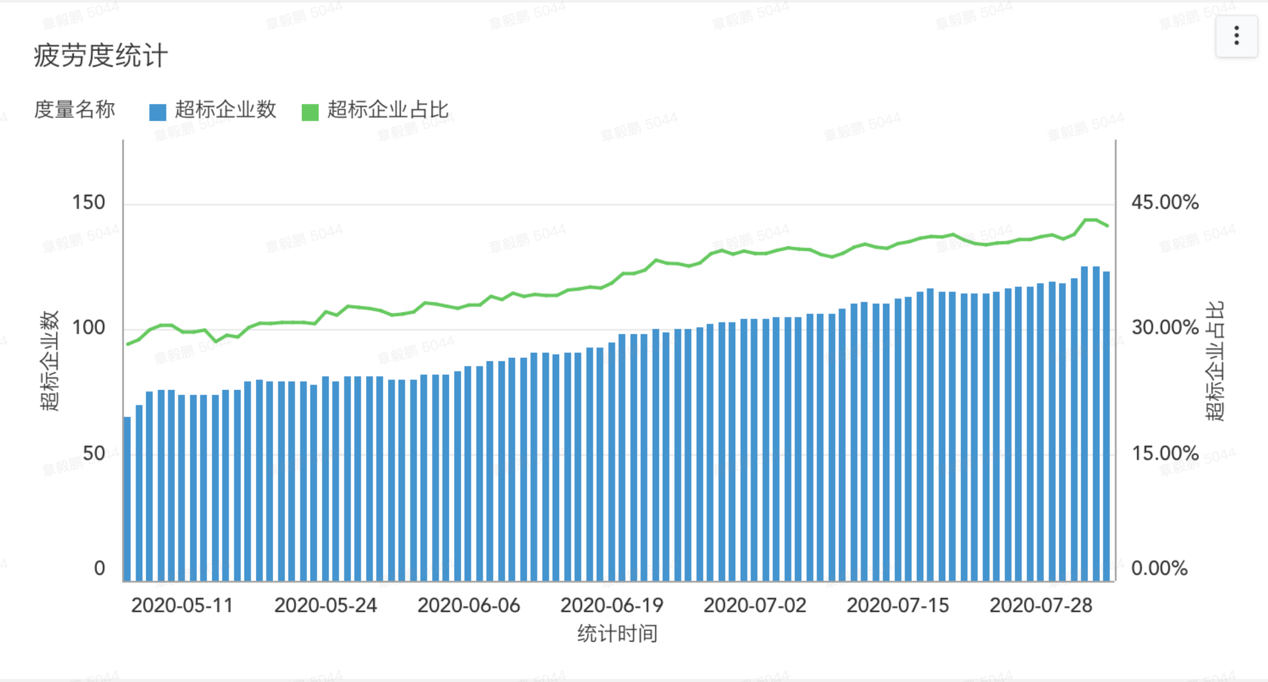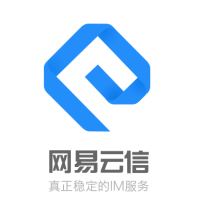Introduction : Based on industry experience, the LTV of a good SaaS enterprise service company is generally greater than three times the CAC. How to acquire customers more efficiently and improve customer life cycle value through data? This article is from Zhang Yipeng, a data development engineer of NetEase Smart Enterprise. Please indicate the source and author of the reprint.
I SaaS Overview
(I) Introduction to SaaS
SaaS, It is the abbreviation of Software-as-a-Service, which means software as a service, that is, providing software services through the network. Unlike traditional software services, SaaS platform providers uniformly deploy application software on their own servers. Customers order services on demand, and pay fees according to the number of services ordered and the length of time.
If you want to drive the business through data, you must first understand the characteristics of the business. What are the characteristics of Saas mode?
(II) Features of SaaS mode

Put a classic picture. The figure above shows the cash flow model of a typical customer in the SaaS model. The horizontal axis is the time, and the vertical axis is the revenue that customers bring to the enterprise. It can be seen that we usually pay a lot of costs to obtain a customer, and the profit point lies in the customer's continuous income.
From the figure, we can see two characteristics of SaaS mode:
- High customer acquisition cost Compared with the To C product, the SaaS model costs more to acquire a customer, requires multi department and multi link support from marketing, sales, pre-sales, technical support, etc., and consumes more manpower;
- Revenue from long service cycle Unlike traditional software services, SaaS charges are continuous. Only when customers succeed, survive, and continue to generate revenue, can the SaaS model be considered healthy.
Based on the above characteristics, we can infer that there are two key aspects to the success of a SaaS enterprise:
- Get customers efficiently, and get more paying customers at a lower cost 。 It can be described by customer acquisition cost (CAC), that is, the cost of acquiring a typical customer.
- Improve customer lifecycle value , allowing customers to pay more during the entire life cycle of using products or services. There is also a corresponding indicator: LTV (life time value), the total value of the life cycle, that is, the revenue that a typical customer contributes to the enterprise in the entire life cycle.
Based on industry experience, the LTV of a good SaaS enterprise service company is generally greater than three times the CAC. How to acquire customers more efficiently and improve customer life cycle value through data?
II How to acquire customers more efficiently
The number of new customers=the number of clues * the rate of orders. How to obtain customers more efficiently is essentially to improve the number of clues and the rate of orders under the premise of controlling costs.
(I) How to increase the number of clues
Number of clues=number of visitors * registration conversion rate
1. Increase the number and quality of visitors:
1.1 Marketing effect analysis: measure the effect of promotion work such as content marketing, social marketing, SEM, DSP, etc. by analyzing the impact of visitors' channel characteristics on the number of clues, the rate of clue orders, and the unit price of clue customers. We need to pay close attention to which channels have higher ROI. We need to identify such high-quality customer acquisition channels to increase investment.
1.2 B2B DMP precisely reaches target customers. Use DMP's enterprise relationship network, industry and other data capabilities to locate the core counterpart of the target customer group of the product, and use outbound robot email and SMS to reach it accurately.
2. Improve the registered conversion rate:
2.1 Traffic analysis of landing page to improve the proportion from visitors to registration and trial. In our best practice case, by analyzing the behavior track of visitors on the official website, the bounce rate of each landing page, the depth of access, the hot map, etc., we optimized several key points in the revision, which increased the registration conversion rate from 2 ‰ to 5 ‰, 2.5 times.
- Example of behavior track:

(III) How to improve conversion rate
Order rate=sales capacity * sales efficiency
1. Release sales ability to make sales contact more suitable leads.
1.1 Leads rating to promote appropriate leads to appropriate sales. The sales scenarios of 2B are often complex, with multiple functional teams such as SDR, telemarketing, KA, and channel agents. Different teams and even different sales teams will have their own areas of expertise. So we classified the clues with different characteristics according to their basic enterprise attributes (scale, industry, etc.), registration information (channels, registration periods, information perfection, etc.), visit intention (length of stay, communication methods, historical visits, etc.), and trial depth, and labeled each team according to their sales ability, Give the lead to a more appropriate sales person for follow-up.
2. Improve sales efficiency: online process, automatic management, and data capability.
2.1 The most basic point of online process is to use CRM well and reduce manual input and calculation. The sales process of 2B is often recorded in chat, email, Excel and other ways due to more manual operations. Making good use of CRM means constantly improving the CRM system and trying to migrate offline workflow and offline data online. On the one hand, it ensures the integrity and accuracy of data, facilitates machine statistical analysis, reduces manual workload, and reduces the probability of decision-making errors caused by data quality. On the other hand, CRM is used to manage sales personnel and sales process, which is easy to operate and can greatly improve efficiency.
2.2 Manage automation, develop SOP standard process for sales, and automatically monitor SOP specifications through full link data monitoring to monitor customer sales process anomalies (such as customer probation data anomalies, sales forecast payment collection failure, lead tracking anomalies, etc.), so that sales teams can find problems and solve problems in a timely manner, and further develop leads automatically.
2.3 Capacity data, to create a sales capability map, you can consider the performance completion of Sales, the unit price of sales customers, the order cycle, the ability to add and renew purchases, and the ability of customers to win orders by industry and scale.
III How to improve customer lifecycle value
After paying a certain cost to acquire a customer, it is an important task of Saas model to improve the customer life cycle value. On the one hand, we should try to extend the life cycle of customers and let them continue to contribute to your income. On the other hand, we should try to let customers buy more products and features, so that we can better serve customers.
(I) Retention renewal
If the LTV is more than three times the CAC, customer retention is the core point. Building a complete customer success system, driven by data, is an important means to enhance activity and let users renew their contracts.
1. Know customers and establish enterprise portrait. According to the customer's business usage, establish customer stratification, life cycle, health, fatigue and other indicators to determine the customer's willingness to renew and purchase. Customers with different tiers and different life cycles adopt different operational strategies; Different health and fatigue levels pay different attention
1.1 Customer stratification: according to ARR, scale, industry ranking, etc., customers are divided into different types and levels as the basis for differentiated operation. The essence is to increase investment in the kind of customers who contribute a lot to the company's revenue.
1.2 Life cycle: According to the customer life cycle theory and in combination with the actual business characteristics, we divide customers into new period, critical period, growth period, renewal period, and old customer period. Different stages have different operations, and different risk levels are divided according to the active situation. For example, based on data analysis, we found that the high activity of new customers from the second month to the fourth month of their opening means a high probability of renewal. We defined this period as the critical period. In the critical period and the previous new period, the operation action is very important, and the customer risk during this period should also be focused on.
- The universal model is as follows:

1.3 Health: describe the customer's own business development and customer stickiness according to the customer's use of product functions. Through the health board, you can monitor the overall use of the business and the health change of a customer.

1.4 Fatigue (satisfaction): describe customers' satisfaction with products and services according to the number of consultations, service availability and demand completion.

2. Data driven renewal, including guiding new customers to use key functions, building renewal follow-up feedback system, loss warning, loss recovery, etc.
2.1 To guide new customers to use key functions, first we need to find the key functions retained by new customers through data analysis, which is often the core or high value point of the product. Then, through product design optimization, CSM intervention and other ways, guide new customers to discover and use these high-value functional modules, create business value for users as soon as possible, so as to improve the retention rate of new customers.
2.2 Establish a follow-up feedback system for renewal, inform Sales CSM of all maintenance work before renewal 3 months before the expiration of the goods, collect the follow-up results, determine whether the customers have intention to renew, and then focus on customers according to the feedback to form a closed loop.
2.3 Loss warning, to find out in advance that the consumption has declined month on month and the frequency of function use has decreased, and remind CSM to intervene. Don't wait until the customer has decided not to renew the contract, and then it is too late to find the customer loss. We need to build a model through data monitoring of customer function billboards, find out the signs of possible customer loss in advance, communicate in time, intervene in time, and finally achieve customer retention and buyback.
2.4 Loss recovery. After the loss of customers, it is recommended that CSM conduct a return visit to obtain the reasons for loss. On the one hand, we can improve the retention rate of existing customers by analyzing the reasons for loss; on the other hand, we can try to solve the root causes of the problem and recover the lost customers. The recovery of lost customers needs to be based on solving problems and improving experience, otherwise, the recovery of customers may face worse results such as loss of customers again or even bad reputation, If you win the return of customers in the end, please make sure that the returned customers are successful.
(II) Additional purchase
If renewal is the core revenue point of SaaS, additional purchase is an important manifestation of product progress and customer recognition. New customers may not really understand what they need or what products can provide when they first pay. After paying for a period of time, they will understand each other better and customers will trust us more. In order to better serve customers, we should try to let customers buy more. The data can better identify this node.
1. Establish a follow-up system for potential customers.
First, through data analysis, try to find the most likely purchase phase in the customer's life cycle, as well as the preconditions for different product modules.
Then, we define the potential for customers to upgrade and purchase through the customer's stage, functional health of each product, consumption saturation rate, functional use satisfaction rate, industry average and other data.
Once it is found that the customer has a high purchasing potential, distribute the follow-up task to Sales CSM to determine the purchasing intention. For example, the hit rate of customer purchase increase in our model is 13.6%, which means that one of the eight customers provided has a real purchase increase demand and covers about 70% of the purchase increase amount, which greatly reduces the difficulty of sales CSM purchase increase 。
2. Through the analysis of additional purchase data, feedback products to develop typical customers' additional purchase and upgrade journal , you can also try to combine functions to form new product solutions, so as to guide customers to purchase more and guide different types of customers to buy different versions of goods.
III Summary
SaaS companies' operating conditions can usually be clearly described by a few key indicators. A small increase in these indicators can greatly improve the overall situation of the company. In addition to the LTV/CAC mentioned above, there are also important statistical indicators such as the time to recover CAC costs, and the Net dollar retention rate (NDR). The final results of all data driven actions will reflect these indicators.
Data driven is not only the statistics and display of indicators, but also the business strategies adopted based on data analysis. At the same time, it is necessary to continuously monitor the changes brought about by the business strategies to form Data ->Business Action ->Data The most important thing to form a closed loop is to use data to speak of team consensus.
The above is my humble opinion on SaaS data-driven. Students who are interested in SaaS or data-driven are welcome to exchange.
Author Introduction
Zhang Yipeng The data development engineer of the data intelligence group of NetEase Smart Enterprise has been deeply involved in the field of 2B for many years, and is committed to 2B data driven. At present, he is mainly engaged in the work related to NetEase's seven fish lean operation.
Please indicate the source and author of the reprint.

































































